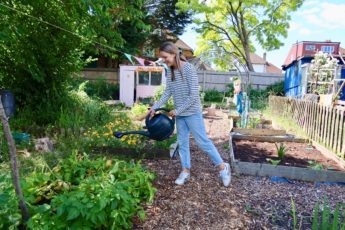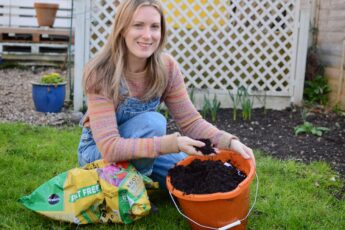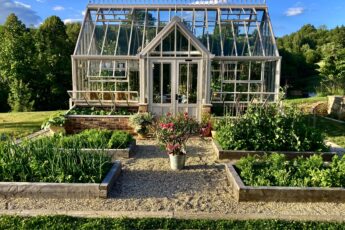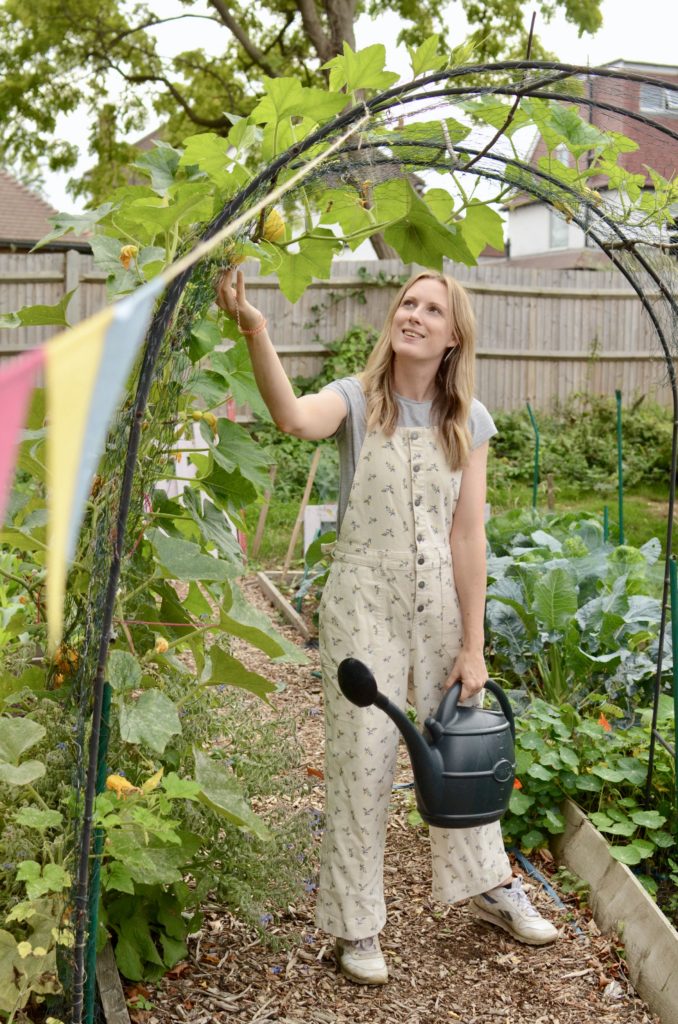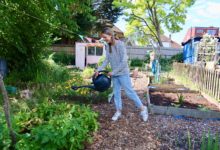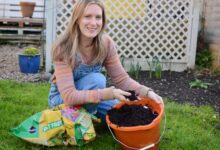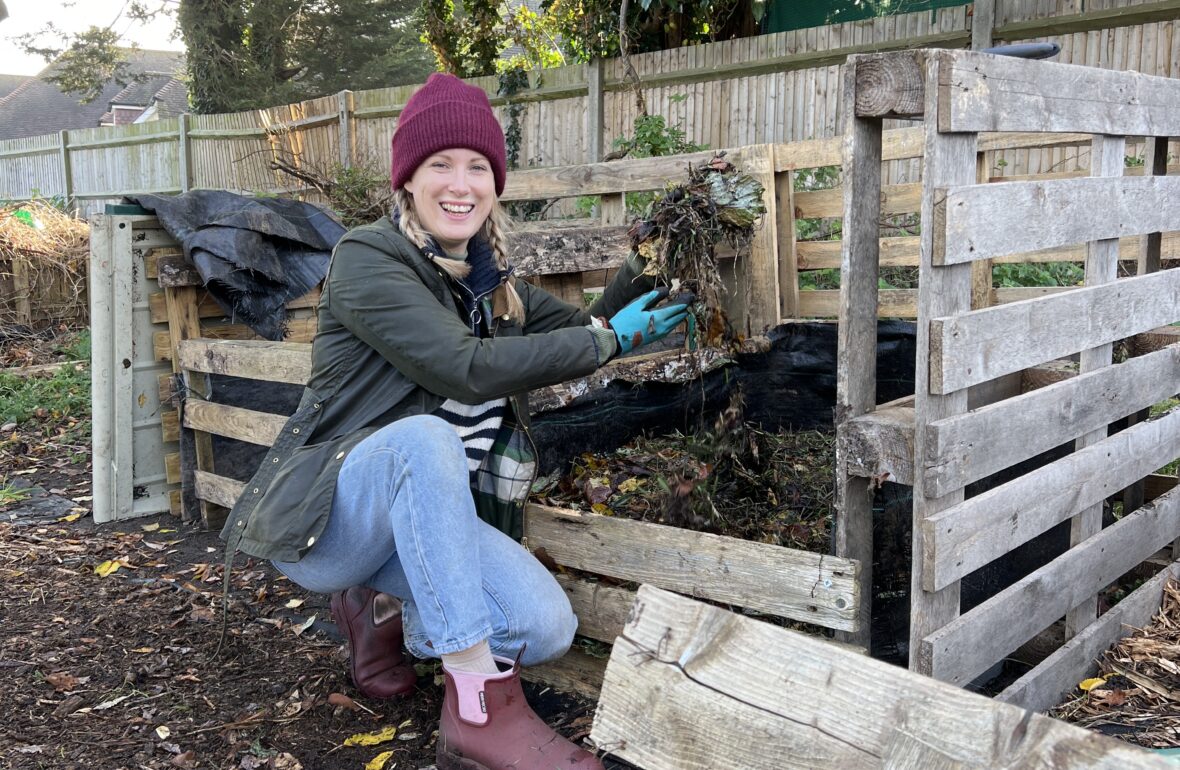
After 5 years on my allotment plot, I’m finally starting a compost bay! An actual dedicated area just for my compost. Turns out, starting a compost bay was a lot easier than I first thought. Who knew!?
One of the reasons I’ve put off trying to make my own compost for so long is because I thought it would be too hard. I’ve had a few goes and always ended up failing. They quickly become overgrown and full of bindweed and I forget about them. I start throwing anything and everything on top and before I know it, it’s just an unsightly mess in the corner.
Making your own compost is pretty important once you get an allotment plot. Firstly, because buying bags of compost is expensive. And secondly, because there will always be old finished crops to throw in there, so why wouldn’t you make good use of them?!
How do you make Compost?
Making compost is a bit of an art form. You need brown stuff and green stuff, about a 50/50 ratio, though a lot of people have told me that lean towards more brown. It requires chopping, turning and regular watering and should ideally be covered over to stop weeds growing and to keep in the heat.
Green material consists of anything… well, green! Old crops, grass cuttings, vegetable and fruit waste, manure.
Brown material could be cardboard, leaves, dried out crops, wood ash, straw… even teabags!
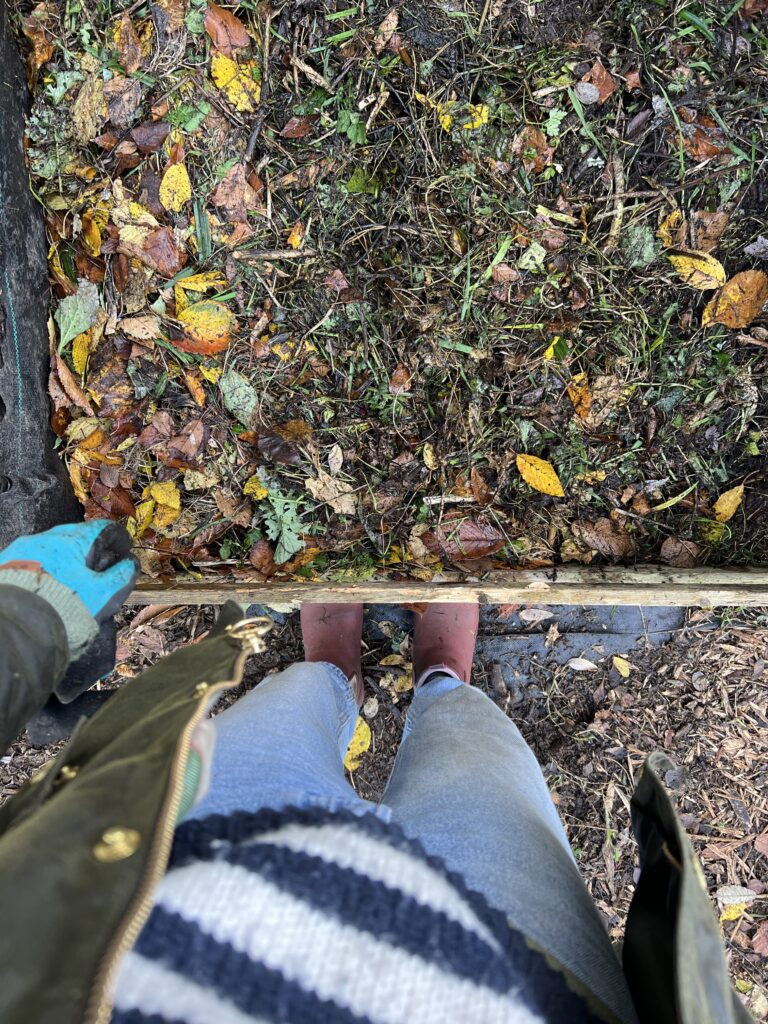
How did I make my Compost bays?
The biggest hurdle with compost making that I’ve found is the actual structure itself. I’ve always made box-like structures that have very limited access, and that’s always been my downfall. So if you want to compost properly and stay on top of it, a good quality, accessible structure is essential.
I’ve used old pallets to make mine. I lined it halfway round with groundsheet to keep the compost inside, but kept the slats open at the top to ensure good airflow. I have a few planks of wood across the front, but have kept this low so I can tip my wheelbarrow into it and access it when I need to turn, chop, water or pull out my compost.
My biggest concern with my compost bays is weeds. My plot had been left to become a bit of a jungle before I took it on and though I’ve done my best to eradicate as many weeds as I can, they still seem to get through. So I’ve lined the bottom of my compost bays with thick cardboard to help keep them away! Cardboard is not only a great weed suppressant but also and great brown material. So it’s a win win!
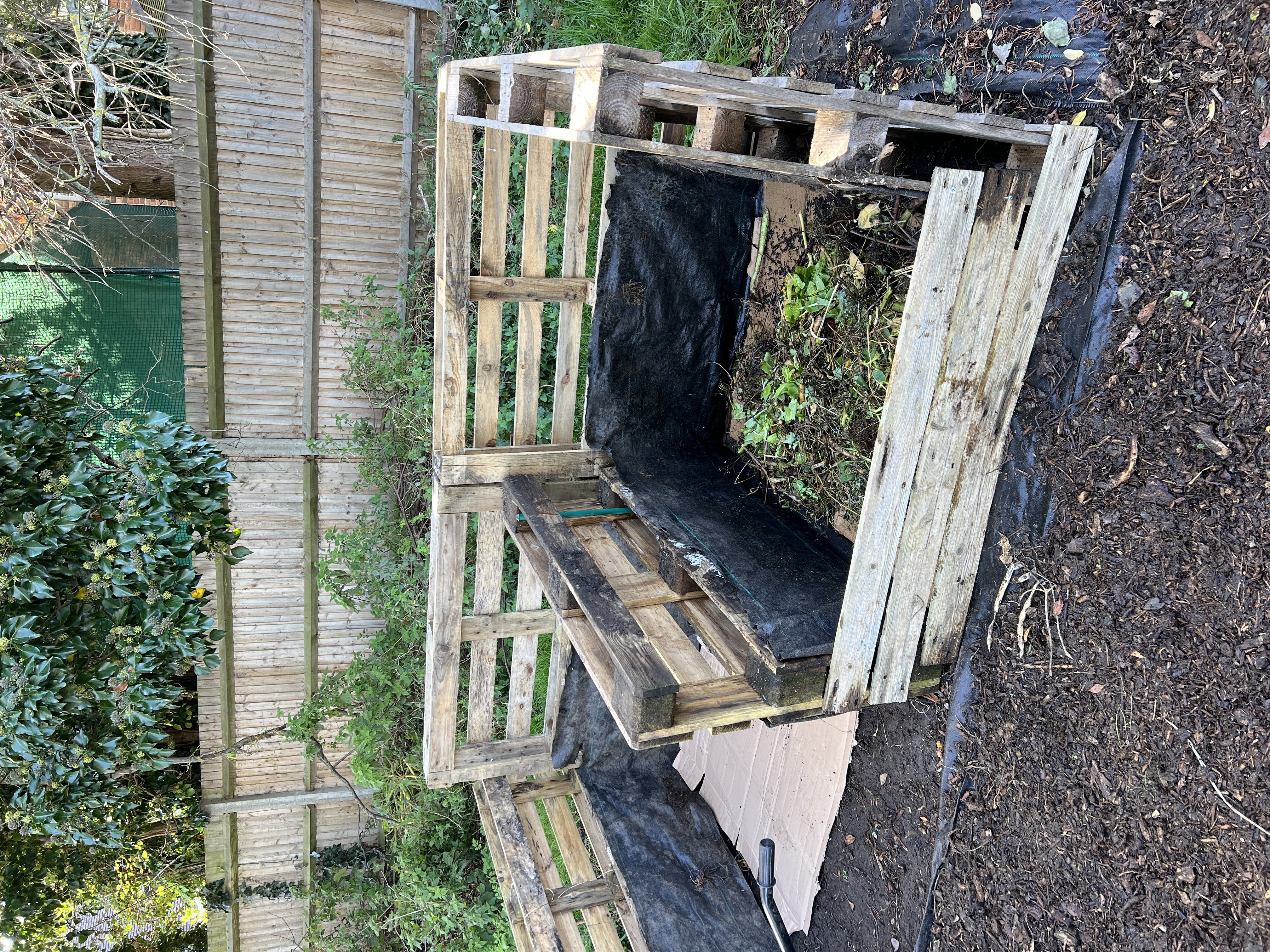
How long does it take to make Compost?
Compost should take anywhere from 6 months to 2 years to make using this method. In fact, the more stuff you have to compost, the quicker it takes! Turning regularly and chopping also helps to speed up the process.
Of course, how long it takes also depends on which method of composting you choose. There are actually lots of ways to compost. Some examples include: Tumbler Composting (A form of hot composting) Worm Farm Composting (Vermicomposting) EMO Composting (Bacteria composting) Combination Composting (Compot Composting).
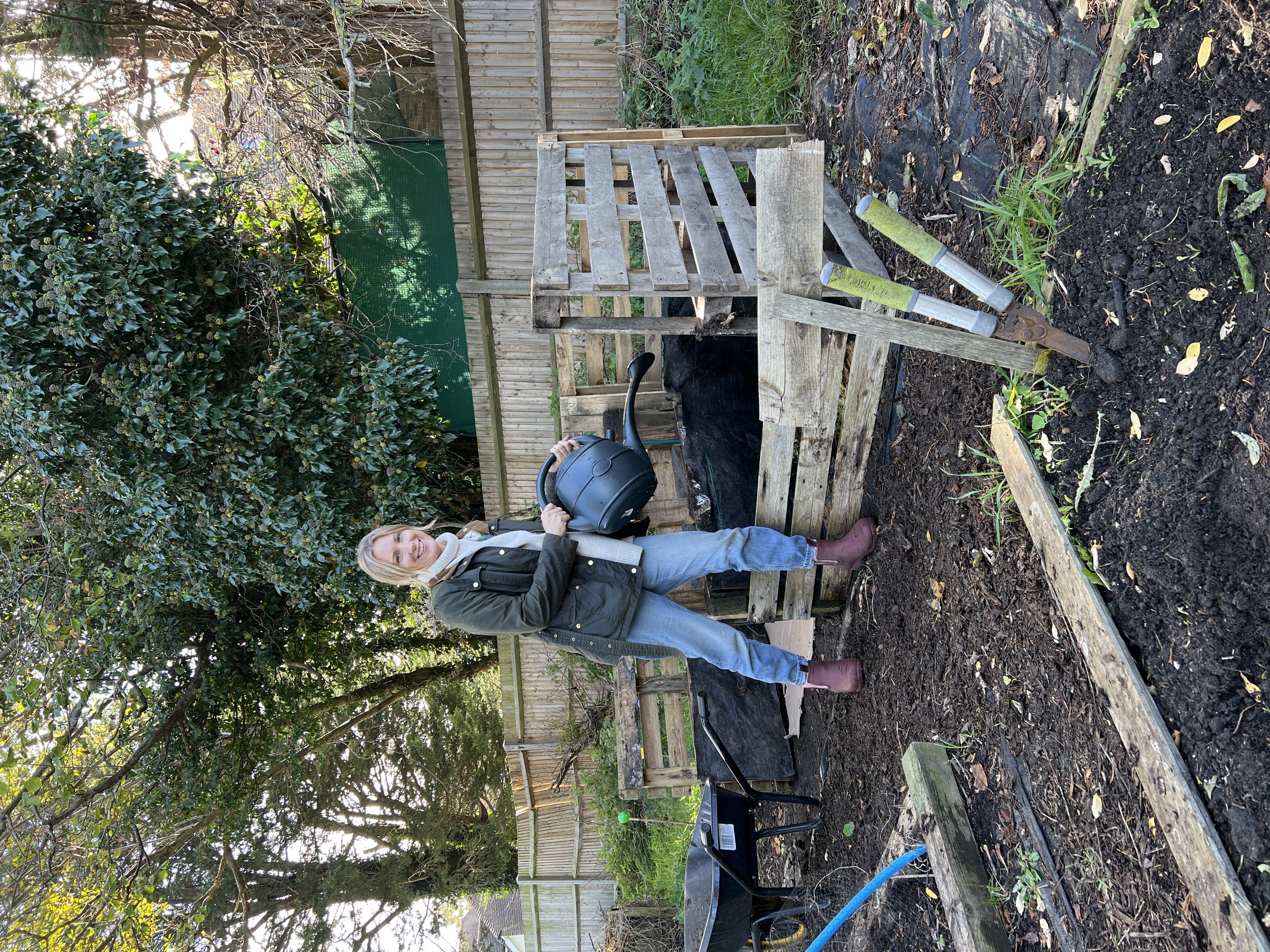
Let’s keep it SIMPLE!!
Like I said at the beginning, one of the biggest reasons I’ve put off making compost for so long was because I believed it to be very difficult. I didn’t feel I would be able to do it and so didn’t put the effort into giving it a proper go.
So let’s keep things simple. Starting a compost bay is one of the most important things you can do at your allotment plot. Making a good structure that is easily accessible will make a huge difference and get you off to a good start.
Add an equal ratio of brown to green material, chop as much as you can, water and turn regularly (I’m turning mine every couple fo weeks). Keep it covered and keep adding to it.
Let’s see if this is the year we can finally make our own compost. Our gardens will thank us for it!
You can follow more of my composting journey on my YouTube channel: Emma’s Allotment Diaries


